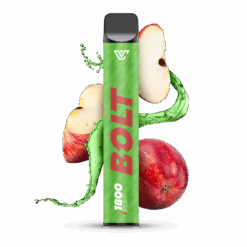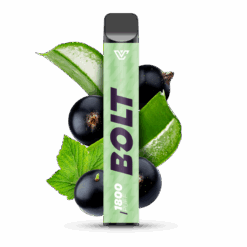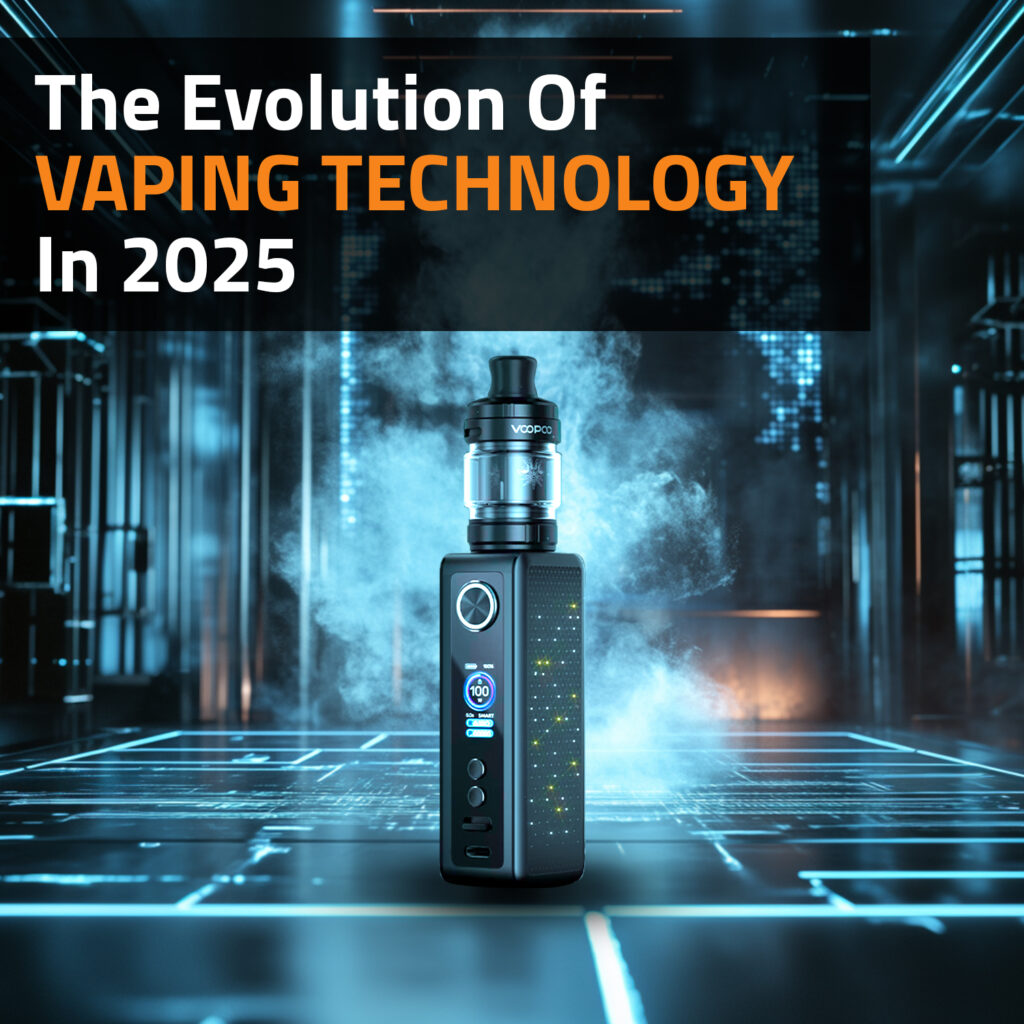Vaping technology has undergone a remarkable transformation in just two decades. From rudimentary cigalikes to AI-integrated smart devices, the industry has consistently innovated to meet user needs, regulatory requirements, and environmental challenges. This article explores the technological evolution of vaping – from its early prototypes to the intelligent, sustainable systems of today – and forecasts where the industry is heading in 2025 and beyond.
A Brief History Of Vaping
The idea of a smokeless cigarette dates back to 1963 when Herbert A. Gilbert patented the first electronic device meant to replace traditional tobacco combustion. However, with limited technology and little public interest, Gilbert’s innovation did not take off.
Fast forward to 2003, and Hon Lik, a Chinese pharmacist who lost his father to lung cancer, reimagined the concept. His invention hit the Chinese market in 2004 and quickly found its way to the West. By 2007, e-cigarettes were introduced to the U.S. and European markets in the form of cigalikes – devices that mimicked the look and feel of combustible cigarettes.
By 2009, vape pens entered the scene, offering improved battery life and vapour production. In 2011, box mods emerged, giving users the power to adjust wattage, airflow, and temperature for a tailored experience.
Each phase in vaping’s development responded to consumer demand – more power, better flavour, greater convenience – leading to the diverse range of devices we see today.
The JUUL Revolution (2015)
The launch of JUUL marked a turning point in vaping’s popularity. JUUL’s sleek design, high nicotine salt content, and ease of use led to a significant increase in adult smokers making the switch to vaping. Its compact size and satisfying throat hit made it appealing to those who wanted a cigarette alternative without the hassle of tanks or coils.
The Disposable Vape Boom (2019)
Disposables exploded in popularity due to their affordability, simplicity, and flavour intensity. Brands started to deliver ultra-convenient solutions with no charging or maintenance required. These devices introduced many new users to vaping, especially those reluctant to invest in a full vape kit.
However, their success came with drawbacks – environmental waste and underage use became pressing issues that would eventually trigger regulatory backlash.
Recommended products
E-Liquids: From Tobacco Tones To Complex Flavour Blends
Early e-liquids offered a narrow range – primarily tobacco, menthol, and basic fruit flavours. But today in 2025, the flavour landscape has exploded. Vapers can choose from dessert blends, tropical fusions, cocktail-inspired concoctions, candy flavors, and more.
Additionally, innovation in PG/VG ratios has allowed for customisability in throat hit and vapour production. Nicotine salts, once a novel concept, are now mainstream. Offering a smoother hit even at high strengths, they have become essential for modern pod systems.
The Shift From Tanks To Pods
In vaping’s early years, glass tanks and replaceable coils were the norm. These systems were effective but came with a learning curve – coil priming, cleaning, and leak prevention required experience and patience.
By contrast, pod systems simplified vaping dramatically. Devices like the Vaporesso XROS and Uwell Caliburn introduced built-in coils, easy swap pods, and sleek form factors. They delivered impressive performance without the mess or hassle, and with the rise of nicotine salts, became the default choice for many.
In 2025, hybrid devices are bridging the gap between old-school performance and modern convenience. These pod-mod systems offer both replaceable coils and refillable pods, appealing to casual users and hobbyists alike.
Batteries: Smarter, Safer, Stronger
Vape batteries have also come a long way. The earliest devices used batteries under 300 mAh, requiring frequent charging and offering minimal power output. Safety concerns were also widespread, particularly in DIY modding communities.
Now, high-capacity integrated batteries (1000 mAh and above) and external 18650/21700 cells dominate the market. Advanced chipset technologies offer safety protections, efficiency modes, and customisable output settings. Devices like the Geek Vape Aegis Legend 3 feature intelligent wattage recognition, rapid charging, and even AI-driven performance optimisation.
What Is Next? The Future Of Vaping In 2025 And Beyond
Vaping has evolved quickly over the past few years, and consumer demands will likely aid in reshaping the future of vaping.
Artificial Intelligence Integration
AI is beginning to play a pivotal role in enhancing the vaping experience. Some of the innovations making waves include:
- Smart puff counters and consumption tracking.
- Auto-adjusting wattage based on coil resistance and vaping style.
- AI maintenance reminders for coil changes or battery issues.
We are also seeing connectivity features, such as Bluetooth-enabled devices that sync with mobile apps for real-time performance feedback, usage analytics, and even parental or age restriction settings.
Personalised Health Monitoring
In development are devices that could track hydration levels, monitor respiratory metrics, and offer feedback on how vaping affects the user’s health. While still in early stages, the merging of wellness tech and vaping could define the next generation of devices.
Sustainability As Standard
The drive toward eco-friendly vaping will continue to dominate product design. We will likely see:
- Modular devices with replaceable parts to extend life cycles.
- Biodegradable pod shells.
- Mass adoption of USB-C fast charging to reduce e-waste.
Advanced E-Liquid Formulations
Expect further breakthroughs in flavor science. Brands are experimenting with natural extracts, sugar-free sweeteners, and organic nicotine to appeal to more health-conscious users. Temperature-sensitive flavours that change as you vape are also being trialled, adding a dynamic sensory layer to the experience.
AI and Smart Technology: The Future Of Intelligent Vaping
As the vaping industry embraces innovation in 2025, artificial intelligence (AI) is playing a transformative role in the next generation of devices. Smart vaping technology is no longer a novelty — it is becoming a standard in high-end vape kits. This integration is paving the way for more customised, safer, and data-driven experiences.
AI-powered vape devices now come equipped with a range of features that were once inconceivable. For instance, some devices use smart sensors to monitor puff duration, vaping frequency, and temperature control in real time. These devices can adapt to individual habits by automatically adjusting power levels, airflow, and even coil temperature to maintain optimal flavour and vapour production. Over time, AI learns user preferences and usage patterns, resulting in a more tailored vaping experience that minimises dry hits and enhances consistency.
Additionally, AI has improved device safety and diagnostics. Smart chipsets now include predictive maintenance algorithms that alert users when coils need replacing or if a malfunction may occur. This not only extends the life of the device but ensures the safety of the user by preventing overheating or short circuits before they occur.
From automatic power adjustment to intelligent puff analytics and seamless app connectivity, AI is reshaping how we interact with vaping devices. As this technology continues to mature, we can expect even more sophisticated integrations such as biometric authentication, breath analysis for health tracking, and AI-driven flavour customisation.
The vaping industry in 2025 stands at the crossroads of innovation, regulation, and environmental responsibility. From the invention of cigalikes to the ban on disposables, the path has been shaped by technological ingenuity and societal demand.
As we move forward, the devices in our pockets are no longer just nicotine delivery systems – they are intelligent, adaptive, and increasingly eco-conscious. Whether you are a long-time vaper or considering making the switch, the evolution of vaping tech in 2025 promises a future that is smarter, safer, and more sustainable than ever before.










